The Northern Naturalist #9
Falling Leaves, Learning Sparrows, Review of Dragonflies of the North Woods, plus News and Notes
Falling Leaves
“How strange and awful is the synthesis of life and death in the gusty winds and falling leaves of an autumnal day!” — Samuel Taylor Coleridge
By this time, across the North Woods, most of the leaves have fallen. Here, right next to Lake Superior, there’s still a mix of bare trees, bright trees, and even still some green leaves. Leaves are on my mind.
Deciduous trees produce complex leaves that are expensive (in energy and elements) to make, but are exuberantly productive during their short lifespan of several months. Conifers, on the other hand, make tiny leaves (needles) that are stiff and waxy. Individually, they are not as productive as deciduous leaves, but they can withstand more extreme weather. They also last longer; for most species, two or three years, but some spruce can keep needles for up to ten years; so needles are not as expensive for a tree to make.
Because of their resilience, conifers are the northern-most tree species, and even as far south as our area, they predominate over deciduous trees in most of the landscape. Ice storms during leaf season are a limiting factor for deciduous trees. Large leaves glazed with ice are heavy and can lead to trees splitting or even falling over. Conifers aren’t usually so damaged by ice. In our area, deciduous trees handle this by dropping their leaves before ice season is upon us.
In his excellent book, What Should a Clever Moose Eat? (Island Press, 2016), ecologist (and subscriber) John Pastor makes the point that leaves are geometric solutions to the need for plants to maximize receiving sunlight, capturing carbon dioxide, and minimizing water loss. (“Capturing the Light” pp. 65 - 110). This leads to a wide variety of leaf shapes and tree crown shapes, and it follows that areas (like the boreal forest) that deal with more diverse seasons and extremely divergent weather conditions will exhibit a greater diversity of shapes. In contrast, the tropics have many more species inhabiting specific niches, but the general shape of crowns and leaves is more homogenous.
This is part of the visual appeal of the northern forest—towering White and Red Pines, spire-like spruce and balsam firs, maples and willows, and aspens and all the others ornament our landscape.
This year, I drove across Upper Michigan right at the peak of fall color. It was spectacular. I don’t have enough experience there to compare, but to me, it seemed that it must have been a great color year. The intensity of the fall color can vary with the amount of moisture during the growing season. Colors are best after a warm, wet growing season, followed by cool, clear days in the fall. This year, our area experienced drought from mid-summer on. The lilacs in our backyard dried up and dropped their leaves early, and I have to think this happened to some extent in the forest too. Heavy rains during fall can leach some of the color out of autumn leaves. A little frost might accentuate color, but a hard, early frost will dampen color quickly.
The pigments that we see in deciduous leaves are produced right from the beginning and are present through most of the summer. We just see green though, because the green chlorophyll dominates all the way into August. As the days get shorter and the chlorophyll in leaves begins to deteriorate faster than it is produced, the other colors (yellow-orange carotenoids, red-purple anthocyanins, and brown tannins) show forth.
Each year, I love to watch the forest change from early spring’s light green to the deep green of mid-summer to the dusky green of late summer, and of course, especially the flaming fall colors. Late fall provides a different pleasure; without leaves, the woody structure of trees is easy to discern and enjoy.
"Climb the mountains and get their good tidings. Nature's peace will flow into you as sunshine flows into trees. The winds will blow their own freshness into you, and the storms their energy, while cares will drop away from you like the leaves of Autumn." — John Muir
Begin with These Three Sparrows:
a Brief Guide to Learning One Group of Birds
“All birds look like sparrows to me. There are big sparrows, small sparrows, and gaily colored sparrows. But they all look like sparrows. Last summer I realized this was a know-nothing attitude, so I bought two bird books. They were filled with every conceivable kind of sparrow.” —Andy Rooney, quoted in A Guide to the Identification and Natural History of the Sparrows of the United States and Canada, by James D. Rising, illustrations by David D Beadle, Academic Press, 1996, p. 9.
More than any other complaint over my years of leading groups and teaching about birds, I have heard it said that sparrows are a hard group. People refer to them as LBBs (little brown birds) or LBJs (little brown jobs). In fact, I think sparrows are one of the easier groups. If you have ever tried to identify gulls, for example, you won’t complain about sparrows.
I think the reputation of the sparrow group comes from 1) the size and widespread distribution of the group, with many species having notable sub-species, and 2) being led astray by the field guides of another era.
Those guides emphasized particular feather field marks as the way to know a species. There’s no doubt that this is important, and to really nail down an unusual identification, you need those marks. Focusing on the marks was an important advance in field identification. However, that’s not really how experienced birders approach sparrow identification in the field. They have an awareness, first of all, of where they are and what time of year it is. So, when they see a sparrow on a fence wire along a pasture in June, they will likely be thinking, “That’s probably a Savannah.” They don’t really know yet, but advancing this hypothesis gives them something to work from. It immediately narrows the possibilities and gives clues about what specifics to look for.
(Truth be told, the first thing an experienced birder will do is listen for the song, and that might clinch the identification before any of this comes into play, but for this article, we’ll work on appearance and behavior.)
“A sparrow is his hunger organized.” —Wendell Berry
Food supply drives bird distribution, and that’s why Savannah Sparrows are usually found in fields. They forage on the ground, picking up the abundant seeds in this habitat and catching insect larvae and other invertebrates to supplement their diet. Learn what you can about where and when particular species are likely to be found. It’s a handy shortcut to beginning to identify a bird. As you notice birds more, this kind of knowledge will build up quickly. Without even thinking about it, you will gain images of particular birds in particular places, and they will guide you in the future.
What if you are just starting, though, and don’t know which birds to find where?
Rather than seeing a bird and then opening a field guide to a section with sixty species to choose from, start by learning a few common, widespread species to use as reference models. Then build your knowledge from there. At this stage, you will not be able to distinguish the sub-species mentioned in guides, and you will not be able to articulate the detailed fieldmarks that would be required to prove you were looking at a rare bird.
Instead, you will have to accept that many birds you see will remain unidentified. You will have to have the humility to let a bunch of them go without knowing what they were. (This isn’t a bad attitude for any birder, however experienced they may be.)
What follows are my recommendations for you if you are birding in the area I cover in this newsletter: the far north of the central United States. My notes will emphasize structure and behavior, which are more reliable factors than specific feather colors and other field marks. The guide by Rising and Beadle noted following the quotation above is excellent, if you want more than your field guide will provide.
Learn These Three First:
Song Sparrow (Melospiza melodia) This is one of the most widespread species in North America. They are heavily-streaked, rusty-brown birds, with streaks on the back, the breast, and the flanks. On the breast, the streaks sometimes coalesce into a “spot,” but this is too variable to be a great field mark. Song Sparrows have short, blunt tails, which they often hold cocked to one side. They spend a lot of time in bushes and other low vegetation. They pump their tails as they fly from one bush to another.
The head is grayish with a pale throat, a brown eyeline, and they have a broad white (sub-moustachial) stripe that forms a “V” along the throat, outlined by black (malar) striping.
You will see Song Sparrows almost wherever you go birding. Spend time watching them and familiarizing yourself with them. It’s almost never a bad idea to ask when looking at a sparrow—why isn’t this a Song Sparrow?
Chipping Sparrow (Spizella passerina) (You’ll likely need to wait until next spring to get really familiar with this one; most are migrating by now.) Unlike the many sparrows that prefer grasslands, Chipping Sparrows like open woodlands, and this preference has made them the quintessential urban sparrow. Cities and towns in our region are full of Chippies nesting. They are smaller than most other sparrows. They have relatively long tails with a prominent notch at the end. In summer, the adults have bright rusty caps and clear breasts. By late autumn, the cap will be brown with streaks. (A rusty-capped bird this time of year will most likely be an American Tree Sparrow.)
Chipping Sparrows will opt for short flights to nearby trees or shrubs. In longer flight, they have an undulating pattern of flapping bursts and glides.
White-throated Sparrow (Zonotrichia albicollis) White-throats like shrubby edge habitat, which is abundant in our area, and they are common in both urban and rural landscapes in our area. They are large sparrows, with pale eyelines that are yellow in front of the eye. They have pale stripes on the top of the head, and, if you can believe it, white throats! They scratch and forage on the forest floor. Their hopping and scratching in dry leaves can be quite loud. Sometimes they will scoot along the ground rather than flushing into flight. They exhibit two types, one with bright white parts as described above, and the other, with pale tan at these places.
If sparrows are new to you, start with these three. I’ll write more in the future about what to do next. There are lots of sparrows around right now, but soon they will have moved south. During winter in our area, Song Sparrows, White-throated Sparrows, and Slate-colored Juncos are the most likely sparrows to remain.
Dragonflies of the North Woods, by Kurt Mead (North Woods Naturalist Series), Kollath-Stensaas Publishing, 3rd edition, 2017, 276 pages. Available at thephotonaturalist.com and on Amazon. $24.95
This is my favorite kind of natural history book: rooted in long experience and mastery of the subject matter, as comprehensive as possible, within a well-defined locality, and full of interesting information, in addition to clear and helpful information on identification and occurrence.
The author, Kurt Mead, is the head interpretive naturalist at Tettegouche State Park in Minnesota. Like most naturalists in stable positions, it took a long time for Kurt to get to that position. Few naturalists stumble out of college into an adequately-paying job; like Kurt, they demonstrate over years and decades their interest and commitment.
Among many other jobs (there is an impressive list of things he has done on the back of the book), Kurt led the Minnesota Odonata Survey Project from 2005-2012. This led to the founding of the Minnesota Dragonfly Society, which continues to be active and growing. The project and the society have expanded records and knowledge of dragonflies in Minnesota and sparked interest in many other states and countries. They added 24 species to the Minnesota list!
The book is now in its third edition, so it has grown along with Kurt’s experience and knowledge. Over 100 species are covered, and anything you find in northern Minnesota, Wisconsin, or Michigan that isn’t in this book is a true rarity.
Those of you who have been reading this newsletter or perusing back issues may have noticed that some of the reviews are of books by people I know. I always try to reveal my connections, and I honestly love all of these books, so my reviews are not only promotional. I want you to benefit from the community I have benefitted from too.
Well, this one is the most nepotistic yet. Kurt is my cousin! What are the odds that two cousins would end up being Minnesota state park naturalists (although I was a mere seasonal naturalist and Kurt has a much longer and greater state park career)? No doubt we both benefitted from an extended family who loved farming, nature, and the out-of-doors. It isn’t only striking good looks and receding hairlines that we inherited!
Another coincidence is that Kurt and I both looked up to another Minnesota State Park naturalist, the late Dave Palmquist. He was the esteemed park naturalist at Whitewater State Park in southeastern Minnesota for years. Kurt knew him because he grew up near Whitewater. I knew Dave because we grew up on the same block in Northeast Minneapolis. We used to shoot hoops together behind our garage.
As I wrote this review, I realized that by most standards, Kurt is no longer young. And yet I, his older cousin, still consider him young in some part of my brain. (If you see this, Kurt, “When you’re feeling old, call me; I will always think of you as young!”) This reminds me that I should call Kurt’s mom, my most excellent aunt, Phyllis. She’s really not that much older than I am, but since she babysat me in the past, I’m sure she thinks of me as younger.
Back to the book. It’s a splendid book. It begins with clear, easily-grasped explanation of dragonfly biology and behavior. It includes sections about dragonfly migration, for example, and it outlines the limits of our understanding at the time of writing. This is possible because Kurt is involved in expanding the frontiers of our knowledge of dragonflies. He has records of dragonflies in most of Minnesota’s 87 counties.
It’s great to have a book that matches the area I write about and live in so closely. I frankly would not be nearly as interested in dragonflies as I am if I didn’t have this book (and its earlier editions). The book’s publisher is Sparky Stensaas, who has also published a couple of my books. This one is part of the North Woods Naturalist Series. All of the books in this series are worth owning.
The book includes detailed species accounts, with range maps, good photos with salient field marks, comparisons with similar species, occurrence information, and anything that you might find interesting about a particular species. If you know nothing about dragonflies, you can pick up this book and find everything you need to get started.
I love this book, and it’s not just me—Dragonflies of the North Woods won a national Outdoor Book Award when it was first published.
News and Notes
My friend, subscriber Brian Fragodt, alerted me to a review of a recently-reprinted biography of the poet Emily Dickinson (“Emily Dickinson, botanist” by Timothy Jones, in The Christian Century, September 2024, p. 48) The biography, Emily Dickinson Face to Face, was written by Martha Dickinson Bianchi, the poet’s niece.
The book details how much Emily Dickinson loved plants and birds. She began writing about them at the age of nine. At the age of twelve, she began tending her family’s garden. She made a 66-page leather-bound “herbarium” or collection of 424 dried plant specimens. The reviewer says that birds made it into 220 of her poems.
She would send “nosegays” (small bunches of fragrant flowers) to friends and neighbors, often with a piece of poetry attached. (NB: If a great poet sends you a nosegay with a poetic note attached, be sure to save it!) One friend said that, in her time, she was much better known for her posies than for her poetry. Whether that’s the case or not, it is clear she loved nature study!
Sky Lights and FOMO (fear of missing out)
Solar storms have provided some great opportunities to see the aurora borealis recently. We were happy to see a great display on October 10th, when we were visiting Dan and Deb Swanson in southern Michigan.
We had another fun sky experience last week, when comet Tsuchinshan-ATLAS was briefly visible in the night sky.
It’s visible near the middle-left of this photo. In a dark-sky environment, we might have been able to see it with the naked eye, but I found it from our backyard by aiming my binoculars in what we believed to be the right direction, which we learned from Bob King’s column in the Duluth News-Tribune. This photo picked it up, even though we still couldn’t see it without binoculars.
This raises a frequently-missed point about auroras, comets, and other sky phenomena. They will appear much brighter and more spectacular in photographs than they do with the naked eye. It’s all still cool and awesome, but I hear evidence of more FOMO (fear of missing out) related to auroras than for any other natural phenomenon. So when you see photos on Facebook of the northern lights; keep in mind that this is not what the poster saw—it’s what their camera saw. FOMO is the main engine of growth for Facebook, so this fits right in. Just don’t feel quite so bad when you didn’t see it.
Also, beware of this:
The actual aurora is well worth getting up to see, even if what you actually saw was not quite as spectacular as this:
It Happened Again
Last Saturday, Brandon Lentz found a Western Tanager in Silver Bay, Minnesota, about an hour from where I live. I heard about it a couple of hours after the sighting, and we dashed up there, arriving around dusk—no bird. I went back the next day—still no bird. This was the first October record for Minnesota, and a new month in which I have been thwarted by this species.
"Life starts all over again when it gets crisp in the fall," said Jordan.
"And I guess it always will, no matter how old we get. It's a way of clearing out the old and making room for something new."
F. Scott Fitzgerald, in The Great Gatsby
.




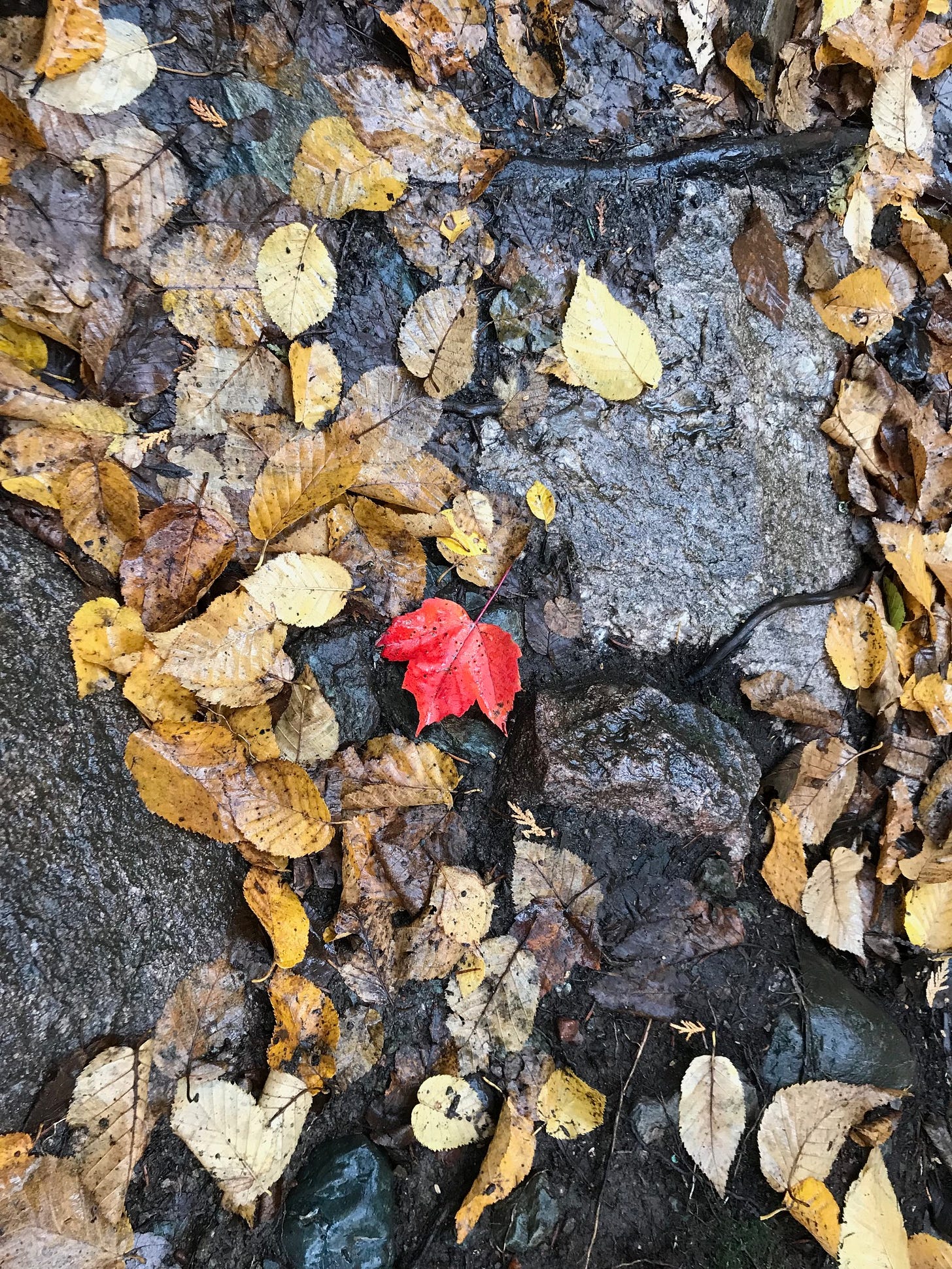
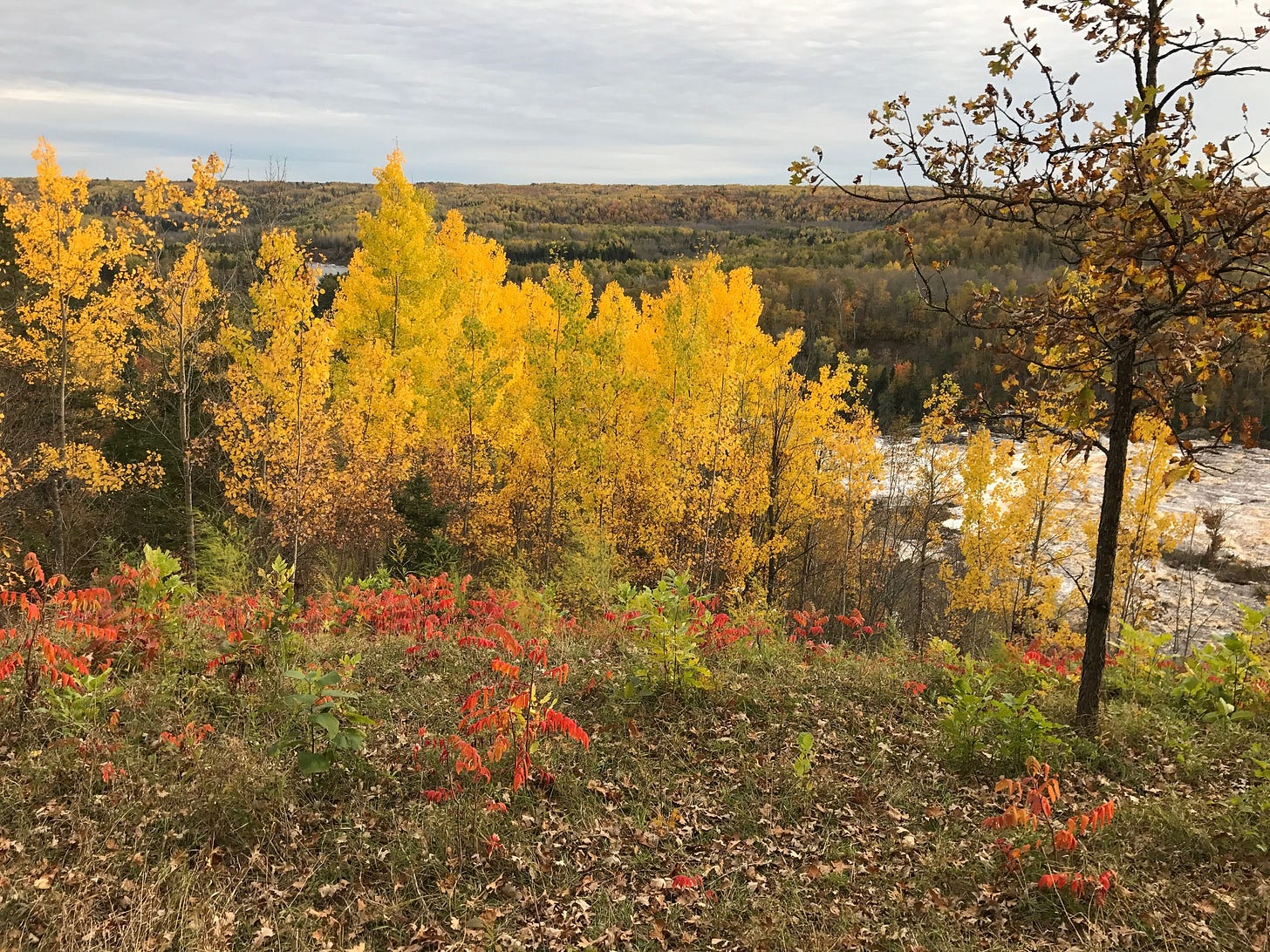
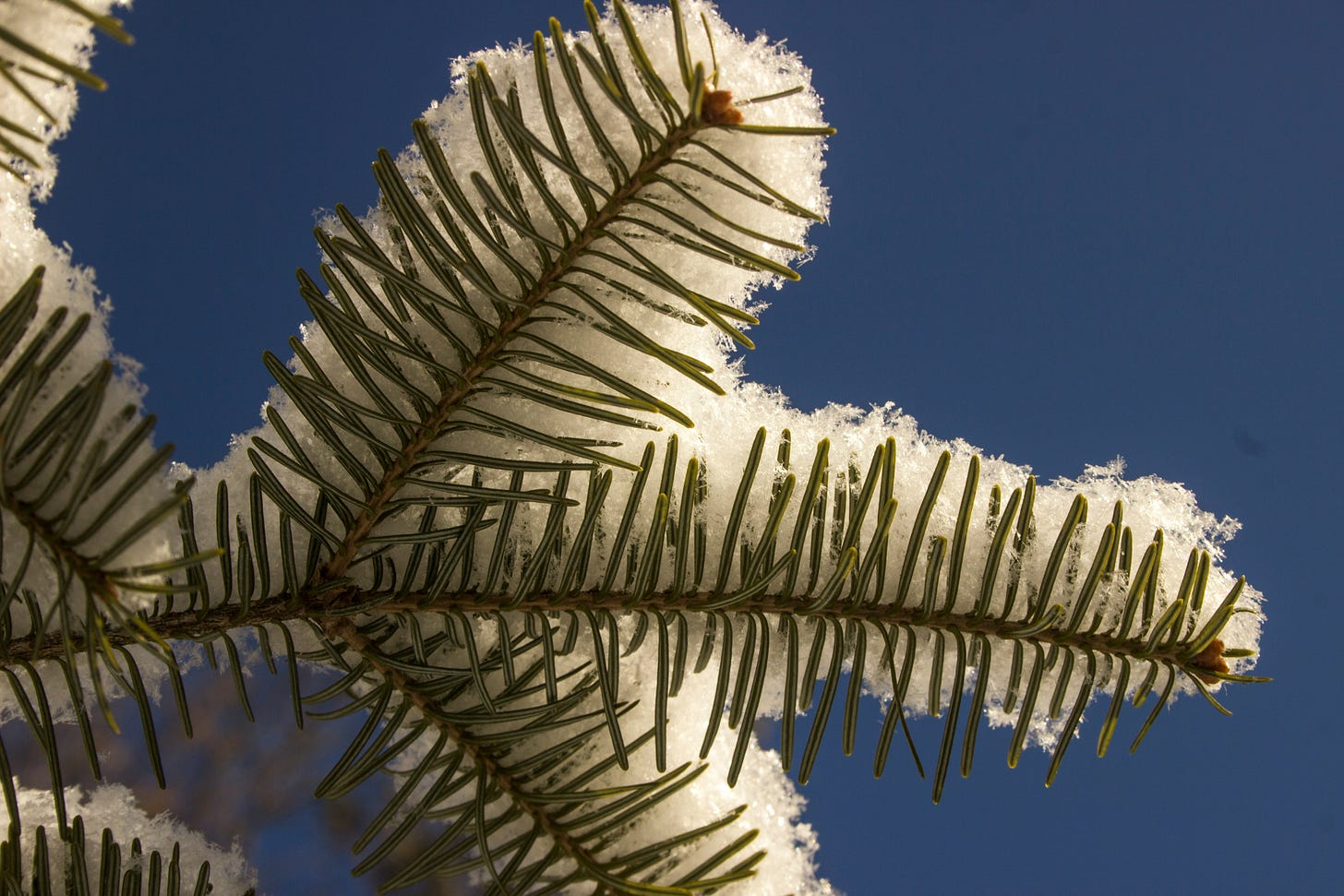
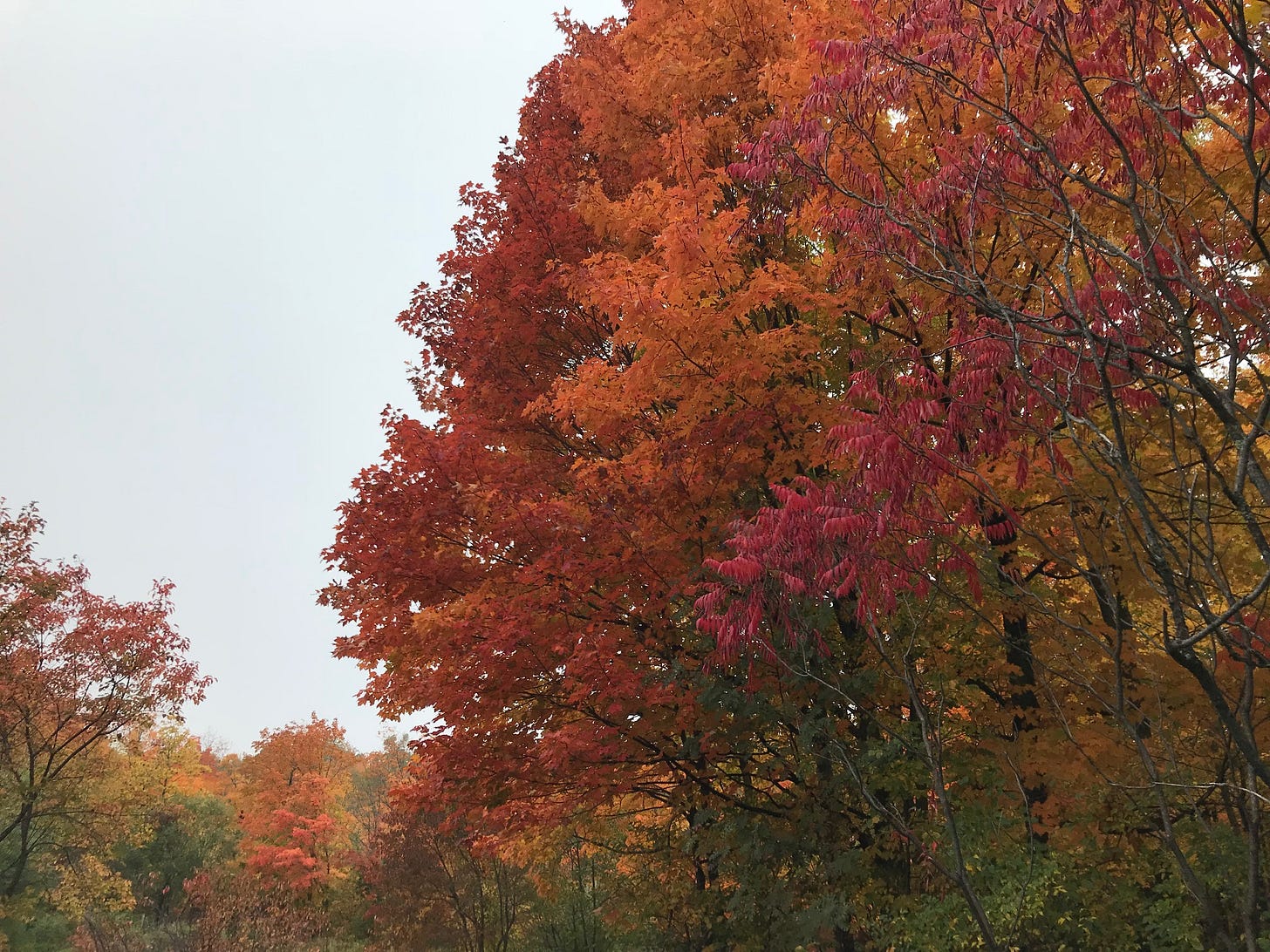

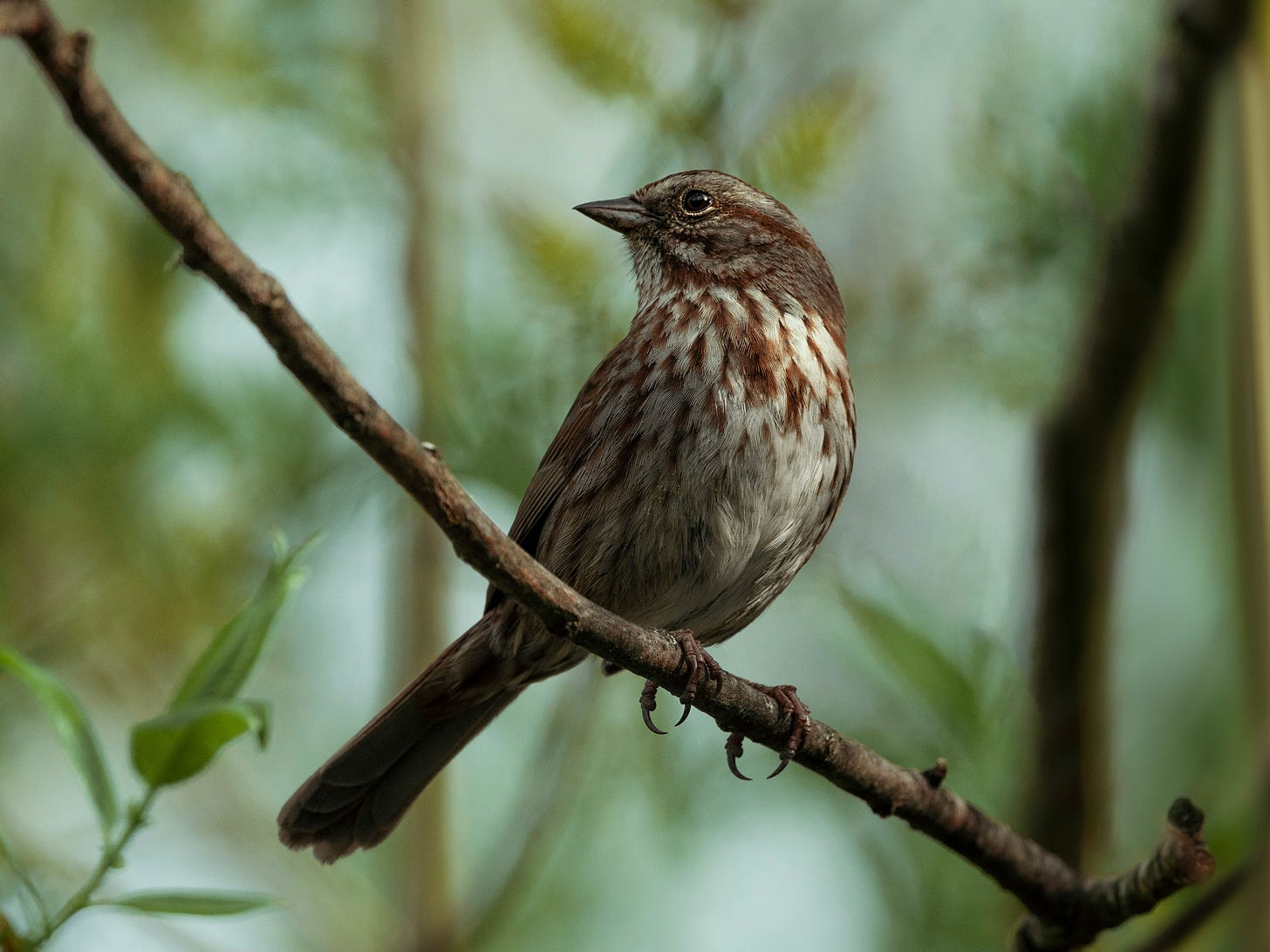




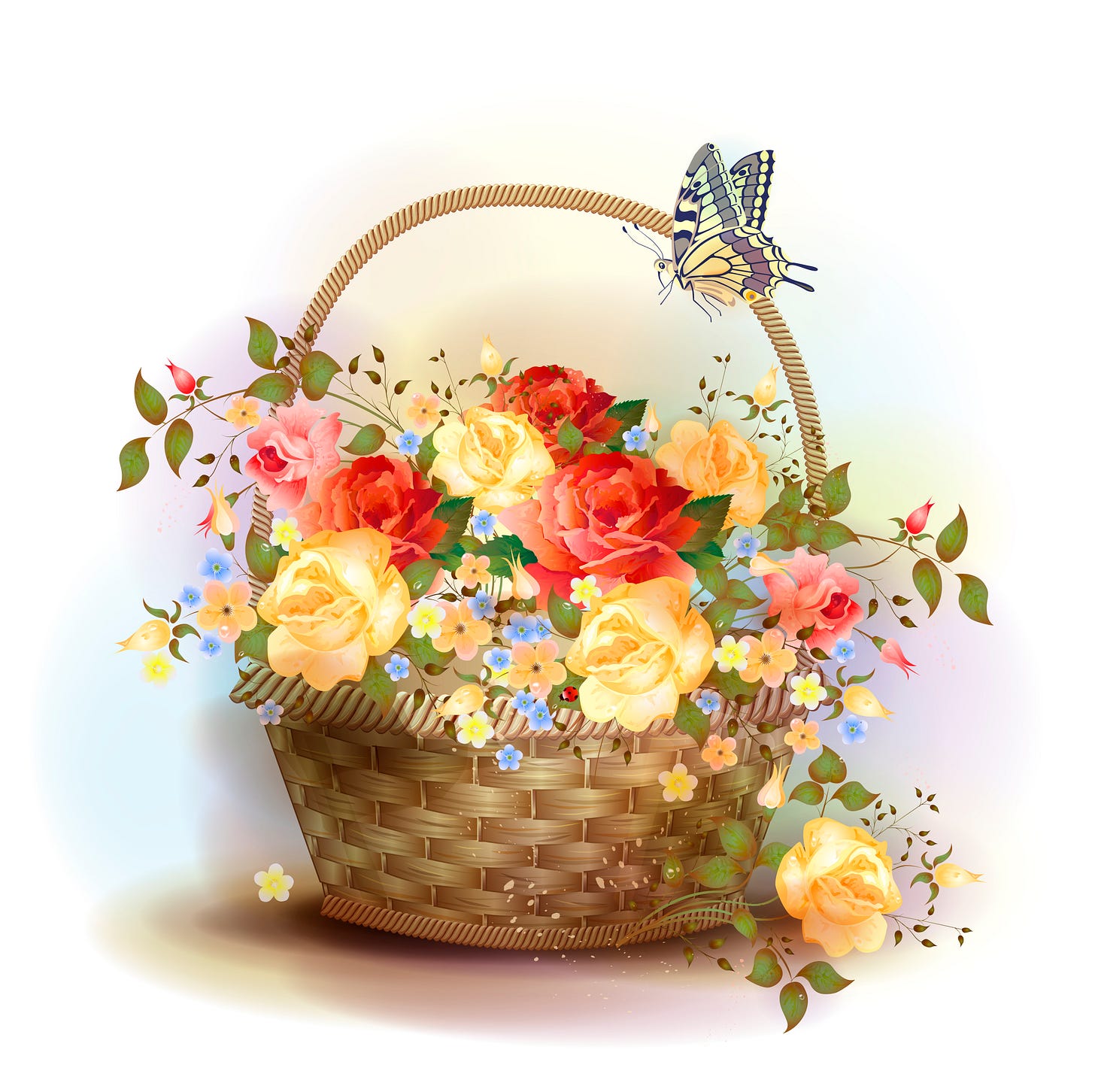
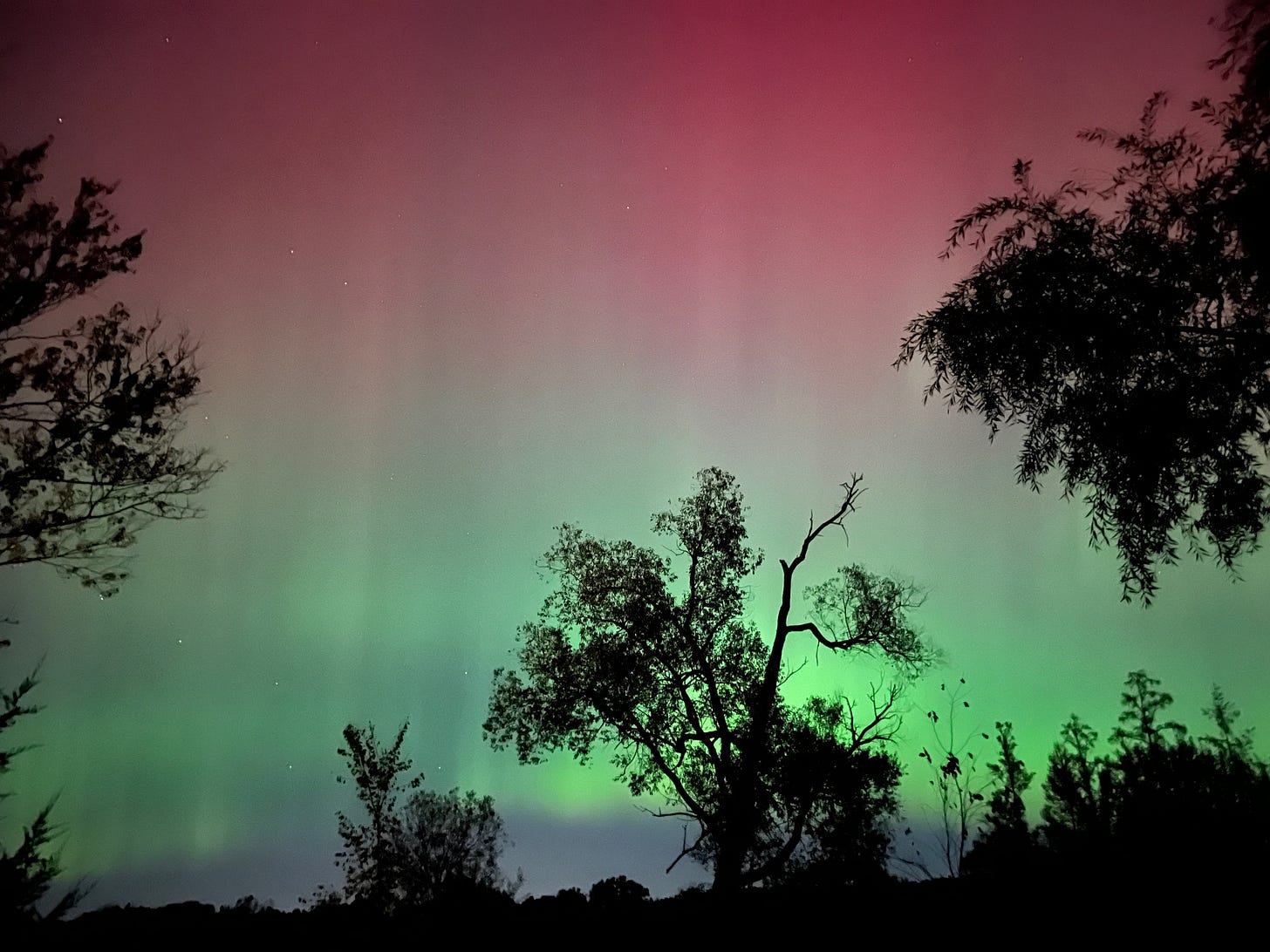
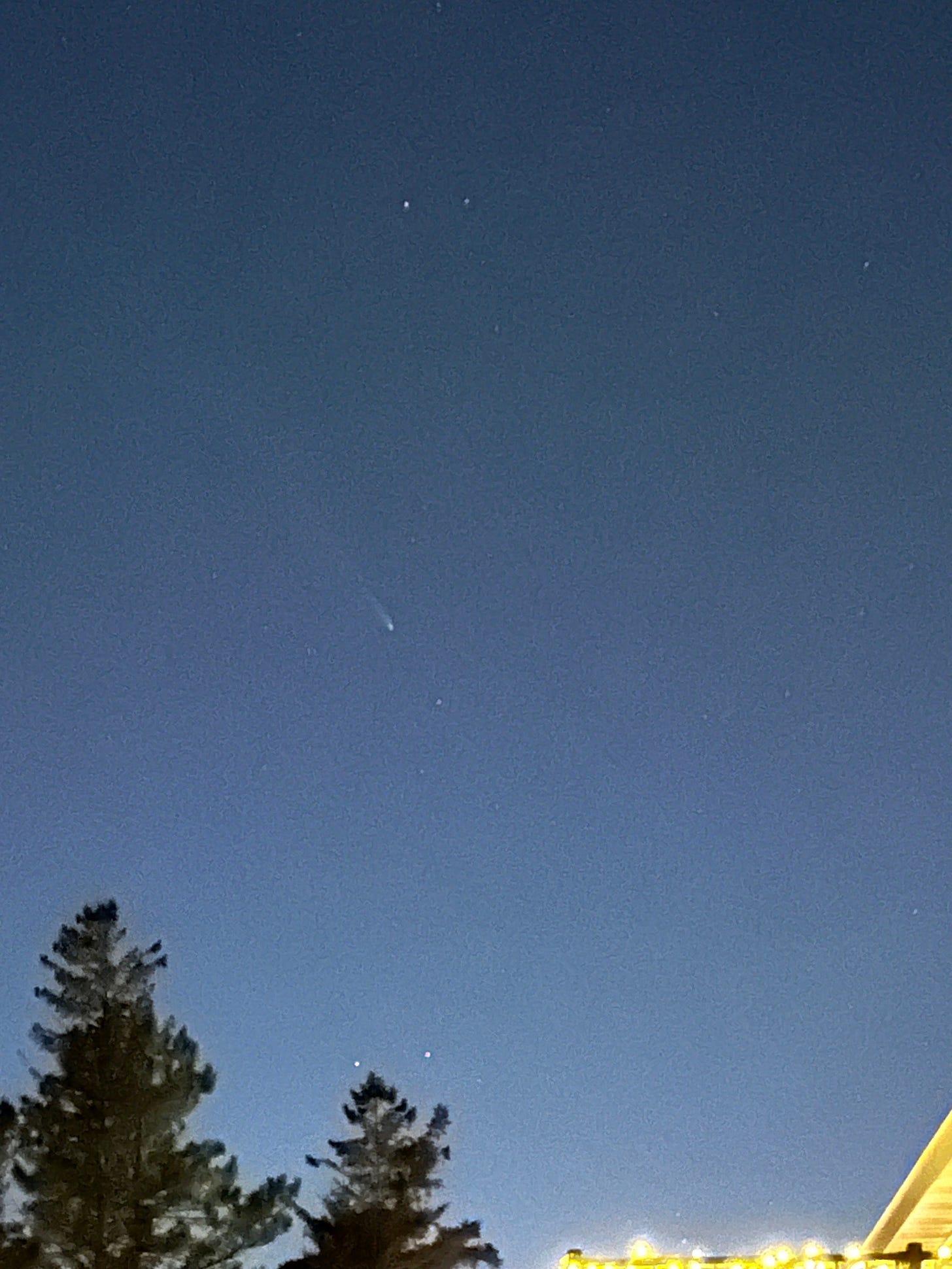



Thanks for the recommendation regarding your cousin's dragonfly book! We see so many varieties in the course of our hikes here in the U.P. that this would be nice to have along!